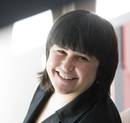Hope in organ building
Under the title "Bioartificial Hope", the central theme of this issue focuses on developments in the creation of organs and tissues for transplants. One of the development lines focuses on stem cells and the goal is clear: to create in laboratory the organs or tissues you need using patient stem cells. The functional organ is created by the growth of stem cells on the basic structure of the organ, either from an artificial structure or from the organ of a donor. The other line of development is working on the path of artificial structures so that, where possible, synthetic parts perform the function of organ or lost section.
It is evident that the transplants with these techniques are as scarce as the spectacular ones, and that although the objective is clear, the path and the result are not so clear. The feasibility and scalability of these lines of work can be consulted both technically and economically. In fact, according to the internal pages, the technology of bioartificial organs has been able to produce a trachea and transplant it successfully in a few days, but it has cost the patient 350.000 euros.
Like the trachea, in the last few years it has been possible to develop and transplant mechanical ventricles, custom titanium jaws or synthetic corneas based on collagen. Avoiding the waiting and rejection of a donor are the main advantages of bioartificial organs from the point of view of transplantation; from a more general point of view of medical research, all the new ways that could be developed in the objective route. For example, more and more stem cells can be used to recover lost functions that are not organs.
Bioartificial organs and regenerative stem cell medicine may never be a substitute for conventional transplants, but they don't have to. If proven to be viable and scalable, complementarity is a sufficient advance.






